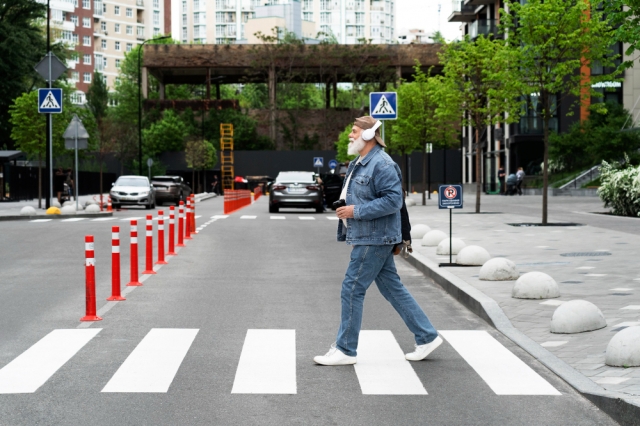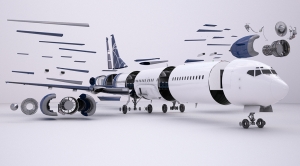Traffic control devices are essential tools for ensuring road safety. Whether it’s signs, signals, barriers, or road markings, these devices are designed to guide drivers, cyclists, and pedestrians through roadways safely.
By managing the flow of traffic, these tools play a critical role in reducing accidents, minimizing confusion, and protecting both road users and workers in high-risk areas like construction zones.
What Are Traffic Control Devices?
Traffic control devices are various tools and mechanisms used to regulate and guide road users. These devices range from simple stop signs to more complex electronic signals. Their purpose is to manage traffic flow, reduce accidents, and ensure the safety of everyone on the road.
Speed limit signs, flaggers, and barriers work together to slow traffic in work zones, reducing the risk of high-speed accidents. Traffic control companies in Melbourne are experienced in setting up these devices in congested urban areas, ensuring smooth and safe traffic flow around construction sites.
Types of Traffic Control Devices:
- Signs: These include regulatory signs like stop signs, yield signs, and speed limit signs, as well as warning signs like "Slippery Road" or "School Zone."
- Signals: Traffic lights, pedestrian crossings, and electronic message boards fall into this category. They help direct traffic at intersections and other key points.
- Road Markings: Painted lines, arrows, crosswalks, and stop lines guide drivers and pedestrians by defining lanes and safe crossing points.
- Barriers and Cones: Used primarily in construction zones and accident sites, these physical devices separate traffic and protect workers by creating safe zones.
The Role of Traffic Control Devices in Reducing Accidents
Traffic control devices are critical for minimizing confusion, ensuring that road users know where to go, and preventing accidents. Here’s how these devices contribute to road safety:
Preventing Driver Confusion
Clear, well-placed traffic signs and signals reduce driver hesitation, which is a common cause of accidents. For example, signs like "No Entry" or "One Way" provide immediate guidance, helping drivers avoid making wrong turns or stopping suddenly, which can lead to rear-end collisions.
Improving Visibility
Some accidents occur because drivers fail to notice changes in road conditions, especially at night or in bad weather. Devices like reflective signs, flashing lights, and road markings improve visibility, making it easier for drivers to see important information like lane boundaries, upcoming curves, or pedestrian crossings.
Speed Control
Speeding is one of the leading causes of accidents. Traffic control devices such as speed limit signs, speed bumps, and radar speed displays serve as reminders for drivers to slow down, especially in high-risk areas like school zones or residential neighborhoods. These devices are particularly effective in reducing accidents by forcing drivers to adjust their speed in time.
Types of Traffic Control Devices and How They Improve Road Safety
Traffic Signs
Traffic signs are essential for communicating rules and providing directions to drivers. They fall into three main categories:
-
Regulatory Signs: These include stop signs, yield signs, and speed limit signs. By setting clear rules for the road, regulatory signs help maintain order and prevent accidents. For example, stop signs at intersections prevent collisions by ensuring that vehicles take turns entering the intersection.
-
Warning Signs: Warning signs alert drivers to potential hazards, such as sharp turns, pedestrian crossings, or upcoming construction zones. These signs give drivers time to slow down and adjust their driving to the conditions ahead.
-
Guide Signs: Guide signs help drivers navigate the road, especially in unfamiliar areas. Signs showing the distance to the next city or the direction of a hospital ensure that drivers make informed decisions, reducing the chances of abrupt lane changes or last-minute turns that could cause accidents.
Traffic Signals
Traffic signals, like traffic lights and pedestrian crossing signals, control the flow of vehicles and pedestrians. These devices are especially important at intersections, where traffic from multiple directions must be managed.
-
Traffic Lights: Traffic lights at intersections are critical for reducing accidents by controlling when vehicles can proceed. They prevent collisions by ensuring that vehicles moving in different directions don’t enter the intersection at the same time.
-
Pedestrian Crossings: Pedestrian signals give people safe opportunities to cross busy streets by stopping vehicles when it's their turn to cross. This reduces the risk of vehicle-pedestrian accidents.
-
Flashing Lights and Electronic Message Boards: These devices alert drivers to immediate hazards, such as roadwork or an accident ahead. By providing real-time information, they help prevent accidents by preparing drivers for sudden changes in traffic conditions.
Road Markings
Road markings, such as lane dividers, crosswalks, and stop lines, play a critical role in guiding drivers and pedestrians.
-
Lane Dividers: Painted lines on the road ensure that drivers stay in their lanes, preventing sideswipe accidents and helping manage traffic flow in multi-lane roads.
-
Crosswalks: Clearly marked crosswalks give pedestrians a designated space to cross, encouraging drivers to slow down and stop when necessary.
Barriers and Cones
Physical devices like barriers and cones are used in construction zones or areas where lanes need to be temporarily closed. These devices create clear, visible boundaries that protect both drivers and workers.
-
Construction Barriers: By separating traffic from work areas, barriers reduce the risk of accidents in road construction zones. Traffic control companies frequently use these devices to ensure worker safety in busy urban areas.
-
Traffic Cones: Cones guide drivers through temporary lane changes, keeping vehicles away from hazardous areas.
How Advanced Technology Is Enhancing Traffic Control Devices
Advancements in technology are making traffic control devices even more effective.
Smart Traffic Signals
Smart traffic signals adjust in real time based on traffic conditions. By analyzing traffic flow, these systems reduce congestion and prevent accidents caused by stop-and-go traffic.
Pedestrian Detection Systems
Pedestrian detection systems use sensors to detect when people are crossing the road. This allows the traffic lights to adjust automatically, ensuring that pedestrians have enough time to cross safely before traffic resumes.
Vehicle-to-Infrastructure Communication (V2I)
In V2I systems, vehicles communicate with traffic control devices. For instance, if a car is approaching a red light too quickly, the system can send a warning to the driver to slow down, reducing the chances of a collision.
Traffic control devices are crucial for maintaining road safety and reducing accidents. From traffic signs and signals to advanced technologies like smart traffic systems, these tools guide drivers, manage traffic flow, and protect everyone on the road.






